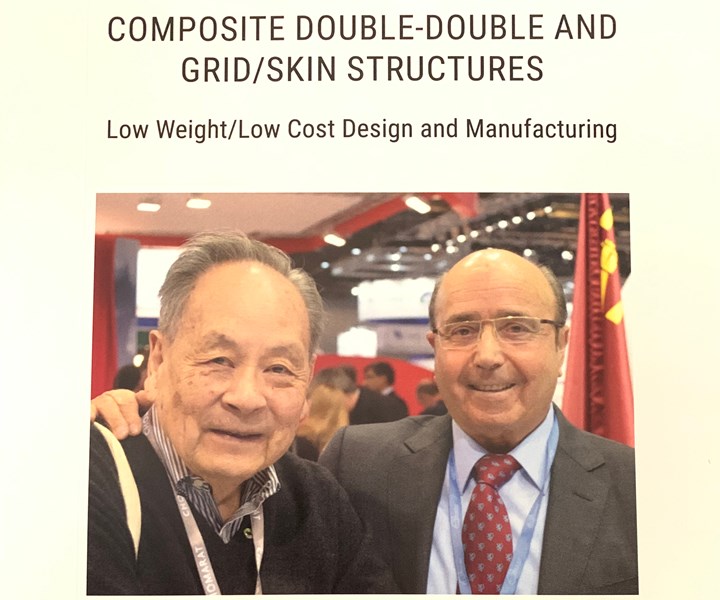Grid/skin structures explained
Composites expert and veteran Stephen Tsai and automated tape and fiber placement specialist MTorres have published “Composite Double-Double and Grid/Skin Structures: Low Weight/Low Cost Design and Manufacturing,” a design and manufacturing guide for the fabrication of grid-stiffened composite structures.

Composites expert and veteran Stephen Tsai and automated tape and fiber placement specialist MTorres (Torres de Elorz, Navarra, Spain) have published “Composite Double-Double and Grid/Skin Structures: Low Weight/Low Cost Design and Manufacturing,” a design and manufacturing guide for the fabrication of grid-stiffened composite structures. The book outlines the design principles of a grid-stiffened structure, modeling and simulation, the concept of double-double laminate construction, parameters of fabrication, and mechanical performance of finished parts and structures. The book also discusses potential applications of grid-stiffened structures, including aircraft fuselage panels and other components. Authors are Tsai, professor research emeritus, Aeronautics & Astronautics, Stanford University; Naresh Sharma, CEO and founder of light aircraft manufacturer NASHERO; Albertino Arteiro, assistant professor at the University of Porto; Surajit Roy, assistant professor at California State University Long Beach; and Bob Rainsberger, founder of XYZ Scientific Applications Inc. The book, published by Stanford University, is 112 pages long and makes extensive use of photos, diagrams, charts, drawings, tables and graphs. It is available as an e-book for $19.00 and can be purchased at compositesdesign.stanford.edu.
Related Content
-
Hybrid process marries continuous, discontinuous composites design
9T Labs and Purdue applied Additive Fusion Technology to engineer a performance- and cost-competitive aircraft bin pin bracket made from compression-molded continuous and discontinuous CFRTP.
-
Bio-inspired EV underbody panel developed by TPI Composites, Helicoid Industries
Composite underbody panel for battery pack protection, made of stacked multiaxial noncrimp fabric, will serve high-volume commercial and automotive markets.
-
Understanding vacuum bagging layers in production, repair
Recognizing the functions of each layer in a vacuum bag schedule can help users discover what vacuum bag schedules work best for their application.













